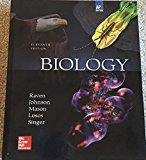
Concept explainers
A covalent bond between two atoms represents what kind of energy?
a. Kinetic energy
b. Potential energy
c. Mechanical energy
d. Solar energy
Introduction:
The covalent bond is formed by the sharing of one or more electron pairs between the two atoms. Usually, the two atoms involved in the covalent bond have either almost equal electro negativity or there is a large difference between the electro negativity. The formation of the covalent bond allows the atoms to achieve their stable configuration.
Answer to Problem 1U
Correct answer:
The covalent bond, which is formed between the two atoms, contains the potential energy. Therefore, option b is correct.
Explanation of Solution
Reasons for the correct statement:
The covalent bond is formed by the sharing of one or more electron pairs between the two atoms. The covalent bond stores a large amount of energy in the form of potential energy. It requires energy to break the bond.
Option b is given as "potential energy."
As the energy stored in the covalent bond is a form of potential energy, option b is the right answer.
Reasons for the incorrect statements:
Option a is given as “kinetic energy.”
The energy of motion is known as kinetic energy. So, it is a wrong answer.
Option c is given as “mechanical energy.”
The mechanical energy is the sum total of the kinetic and the potential energy. It is conjugated to the position and the motion of the object. So, it is a wrong answer.
Option d is given as “solar energy.”
The heat and the radiant energy obtained from the sun is termed as the solar energy. So, it is a wrong answer.
Hence, the options a, c, and d are incorrect.
The covalent bond stores energy in the form of potential energy. Energy is required to break the bond between two atoms.
Want to see more full solutions like this?
Chapter 6 Solutions
Biology
- Miller and Urey created a reaction chamber that simulated conditions in Earths early atmosphere to test the hypothesis that______. a. lightning-fueled atmospheric reactions could have produced organic compounds b. meteorites contain organic compounds c. organic compounds form at hydrothermal vents d. oxygen prevents formation of organic compoundsarrow_forwardWhich phrase best describes what a functional group does? a. assembles large organic compounds b. influences the behavior of organic compounds c. splits molecules into two or more parts d. speeds up metabolic reactionsarrow_forwardA chemical reaction that joins two organic molecules into a larger one and produces water as a by-product is called _____________.arrow_forward
- A substance that has weight and occupies space is calleda. kinetic energy.b. a catalyst.c. matter.d. potential energy.arrow_forwardWhich term describes a fat molecule that lacks doublebonds between carbon atoms?(a) Saturated (c) Unsaturated(b) Polyunsaturated (d) Trans fatarrow_forwardWhat was the purpose of using a high temperature and low pH in starch hydrolysis? a. Increase yield b. To increase the pressure c. Increase the rate of reaction d. Decrease the yieldarrow_forward
- Compare and contrast biological moleculesarrow_forwardEnzymes are organic catalysts that (a) alter the direction in which a chemical reaction proceeds, (b) determine the nature of the products of a reaction, (c) increase the speed of a chemical reaction, (d) are essential raw materials for a chemical reaction that are converted into some of its products.arrow_forwardWhat is the reaction of fats with strong bases producing salts of the fatty acids known as metallic esters and glycerol? a. acid hydrolysis b. alkaline hydrolysis c. water hydrolysis d. oxidationarrow_forward
- When reacted, how does the use of potassium (K+) vs sodium (Na+) change the soap product? Question 26 options: Na+ adds jasmine fragrance and K+ adds a rosemary fragrance to the soap. K+ produces harder, moldable soaps into shapes and Na+ produces softer, liquid soaps. There is no difference between the two cations. Na+ produces harder, moldable soaps into shapes and K+ produces softer, liquid soaps.arrow_forwardChoose the combination of answers that most accurately completes the statement.Ionizing radiation removes from atoms. a. protons c. electrons b. waves d. ionsarrow_forwardWhich statement is false? A. Elements are found in compounds and molecules B. compounds are made of elements C. a molecule must be made of at least two atoms D. chemical bonds form between molecules of solute and solvent E. two atoms of oxygen make a molecule of oxygenarrow_forward

 Concepts of BiologyBiologyISBN:9781938168116Author:Samantha Fowler, Rebecca Roush, James WisePublisher:OpenStax College
Concepts of BiologyBiologyISBN:9781938168116Author:Samantha Fowler, Rebecca Roush, James WisePublisher:OpenStax College Human Biology (MindTap Course List)BiologyISBN:9781305112100Author:Cecie Starr, Beverly McMillanPublisher:Cengage Learning
Human Biology (MindTap Course List)BiologyISBN:9781305112100Author:Cecie Starr, Beverly McMillanPublisher:Cengage Learning





